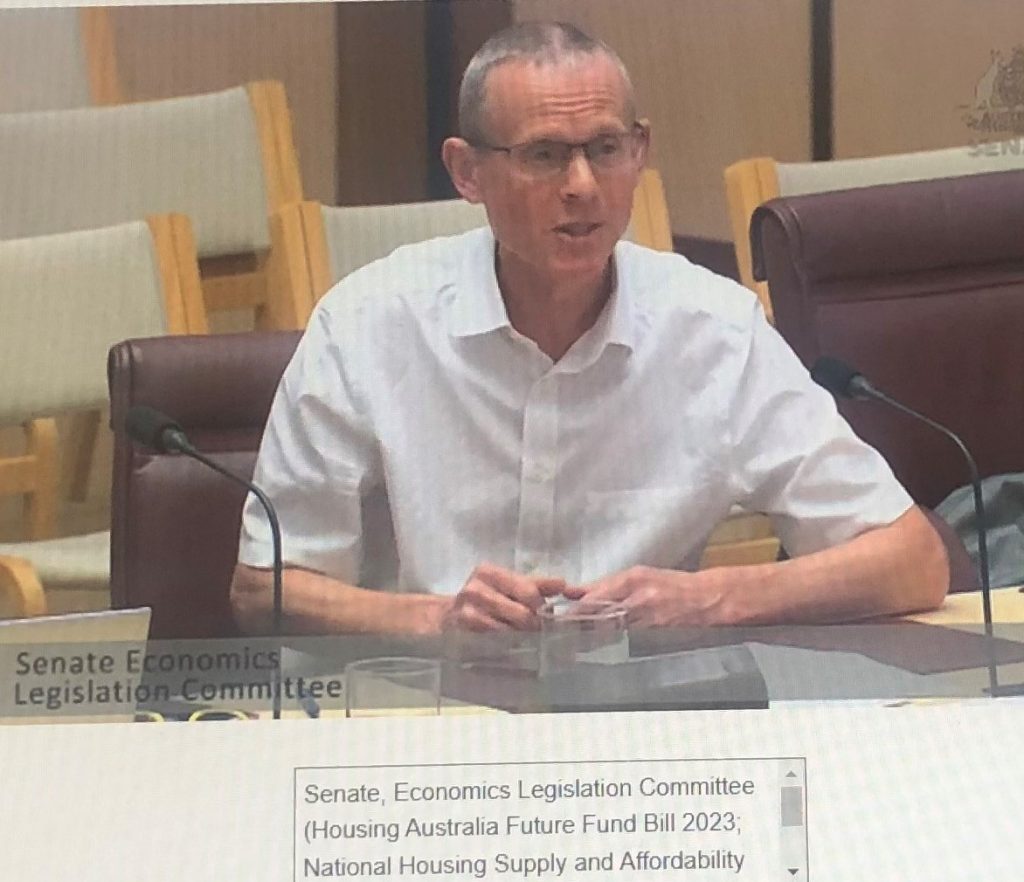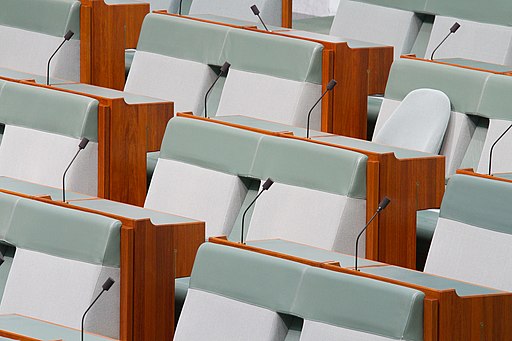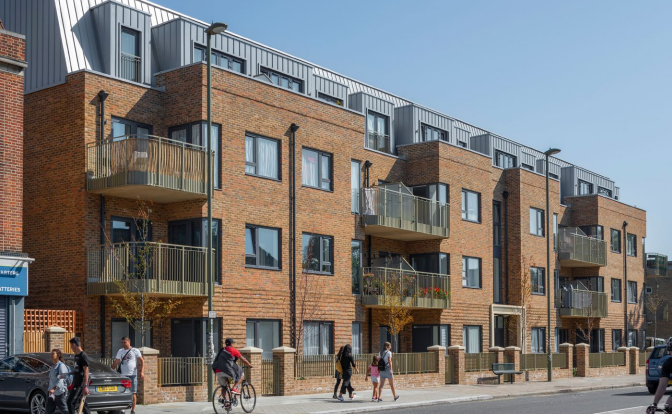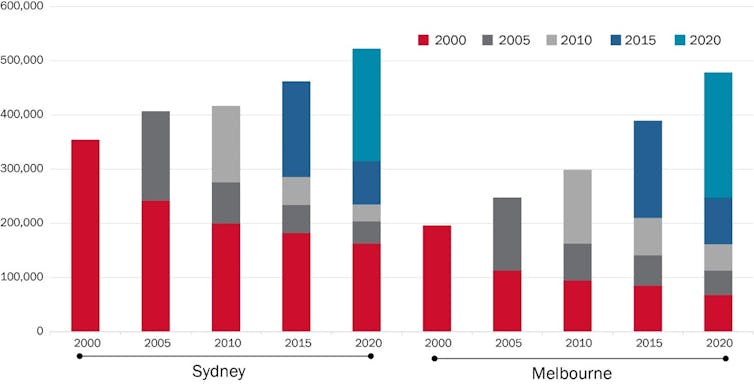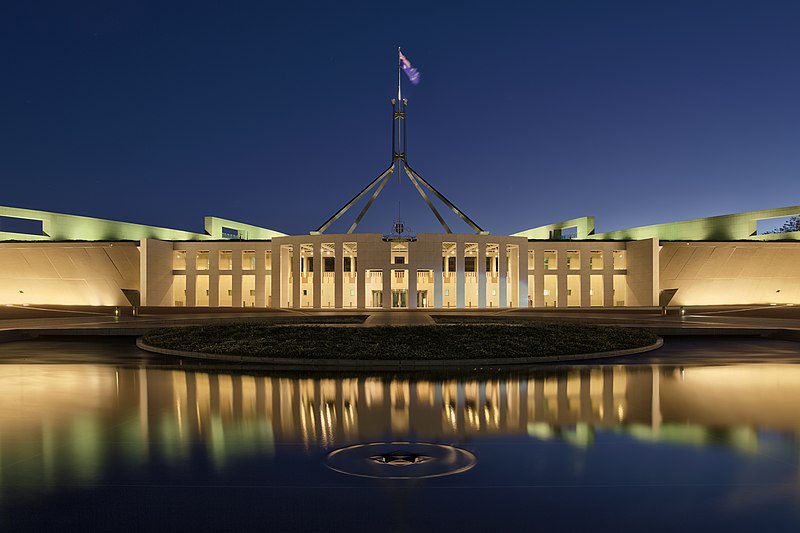
By Hal Pawson
A housing policy bonanza it most certainly was not, but related announcements in Budget 2023 included some modestly positive steps that supplement the Albanese Government’s existing array of housing initiatives. These included pledged new spending to ease cost of living pressures for hard-pressed renters, and to fund dwelling energy efficiency upgrades in social housing. On the tax side, there was a potentially significant move to encourage institutional investment in purpose-built rental housing.
A boost to Rent Assistance
The most substantial housing-related announcement was the pledge to boost the maximum rate of Commonwealth Rent Assistance (CRA) by 15%, a measure that will benefit 1.1 million claimants at an annual cost of more than $500 million over the next five years, rising to $700 million beyond that.
CRA supplements other social security payments. Therefore, many recipients will be also beneficiaries of other moderately bumped-up benefits including Jobseeker and Youth Allowance, as also announced in the Budget. So all well and good for those in that situation. Resulting relief for domestic budgets should leave these households slightly less hard-pressed, with more after-rent income remaining to fund food, clothing and other essentials.
But while the Government states that the prospective CRA boost represents the largest such increase in 30 years that is not saying much; especially within the context of calls by organisations such as the Grattan Institute and ACOSS for the maximum rate to be lifted by at least 40%.
Even when the new rules take effect, single person payments will remain capped at $90 per week. That in a market where the median weekly rent for advertised units has now reached $550 across the capital cities, and with a NSW lower quartile weekly value of $375 for a 1-bedroom dwelling.
A fundamental problem with CRA – and a reason that even the Productivity Commission has advocated enhancement – is its annual up-rating according to CPI rather than actual rents. When, as is generally the case, market rents run ahead of general inflation, the payment is effectively devalued.
For example, while CPI is currently running at 7%, advertised rents are continuing to escalate at over 10% per year. In Australia’s lightly regulated and fluid rental sector, these increases will wash through the whole market fairly quickly. It is the cumulative effect of under-indexation that has produced CRA’s inadequacy today.
But in reality the scheme has many other structural flaws that call for more fundamental reform. These include the nationally invariant maximum payment rates that ignore huge housing market disparities across the country, and the omission of the working poor, excluded by their ineligibility for other social security benefits to which CRA is tied.
Home energy performance initiative
A second new and notable spending pledge in the social housing arena was the creation of a $300 million fund for energy efficiency investment in public and community housing over four years. With the kinds of works envisaged estimated as costing $5,000 per dwelling, this is expected to fund such upgrades to 60,000 units – or around 14% of all social housing. However, there is also a suggestion that the scheme could be expanded via match funding from state/territory governments.
This is part of a larger Budget-announced scheme to promote residential energy efficiency, the Household Energy Upgrades Fund. The greater part of this is a $1 billion low-cost loan facility to be managed by the Clean Energy Finance Corporation and, according to Treasury, set to benefit 110,000 households.
While these measures have a somewhat progressive flavour, their scale once again appears extremely modest. And a huge strategic problem that remains seemingly unacknowledged and unaddressed is the absence of reliable national data to inform a baseline assessment of housing energy (in)efficiency across all sectors.
One other apparent ‘social and affordable housing investment’ measure featured in the Budget was the ‘$2 billion financing boost [to] support the Government’s commitment to deliver more social and affordable rental homes’ as phrased in a Treasury media release. This extends the existing Government guarantee that enables community housing providers to access low price debt. While it can be welcomed as a useful enabling measure, this is very much a financing initiative that comes at a negligible cost to government and provides no additional funding as such.
Build to rent investment tax adjustment
On the revenue side, perhaps the most significant Budget housing announcements were the technical tax changes to encourage investment in so-called build to rent (BtR) developments. This refers to apartment blocks designed and constructed to be held in single ownership for long term rental use.
Although as yet almost absent in Australia, BtR housing forms a substantial part of the rental sector in North America, in the UK and elsewhere. Being funded by institutional investors to generate a long-term rental income stream, it is arguably likely to provide relatively secure tenure, since – by comparison with renting from a mum-and-dad landlord – there is relatively little risk of eviction due to property sale.
BtR apartments are built to be rented out at market rates and do not contribute directly to affordable housing. But BtR may fulfil other housing policy objectives including well-designed, good quality buildings, as well as extending consumer choice and expanding overall housing supply, to the benefit of housing affordability more broadly. Indeed, a growing BtR sector could help the Commonwealth in meeting its self-imposed target of enabling the construction of 1 million homes over five years.
Perhaps partly motivated by this aspect, the Budget included a pledge to equalise the tax treatment for overseas funds investing via Managed Investment Trusts in BtR projects, relative to MIT investments in assets such as student housing and other commercial property. Applying to schemes of 50 or more units, and subject to blocks being retained under single ownership for at least 10 years, the new rules also require that apartments are rented out on lease terms of at least three years.
This move may be seen within the context of a recent estimate that, subject to the now-announced MIT tax change, the supply of new BtR units over the next decade could triple from the 50,000 currently forecast.
The real housing policy action is – we would hope – elsewhere
While a positive case can be made for all of these moves, they were also ‘of a piece’ with the Budget’s overall caution. Regrettably, although probably not surprisingly, there was no new social housing ‘rabbit from the hat’ investment pledge of the kind that might have proved a game-changer in luring the Senate crossbench to pass the Government’s stalled housing bills. That – along with the still to be revealed National Housing and Homelessness Plan – is where we would hope the action of greater substance will be.
This story was first published in John Menadue’s Pearls and Irritations. Read the original version here.












